
Eco Blog (34)
December Hailed as Record Output Month for Wind Power in Scotland
Written by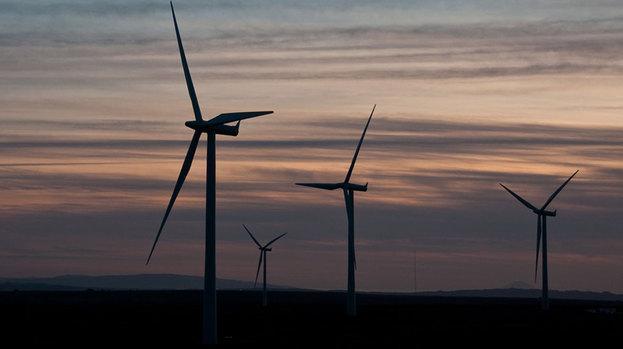
(Article first Published on: news.stv.tv/Scotland | January 03, 2015)
December was a record month for wind power in Scotland, according to environmentalists who have hailed 2014 as a "massive year" for renewable energy.
Renewable energy is taking off around the world, see how you can benefit today from SG Eco's range of products which promote natural lighting and ventilation, visit our site at www.eco.ph
The biggest day for output for wind was on December 10 when there was enough energy generated to supply 6.34 million homes for the whole day, analysis from WWF Scotland showed. The charity said wind turbines generated enough power to supply over 100% of Scottish households on 25 out of the 31 days of December.
Throughout the year wind provided enough power for the electrical needs of 98% of Scottish households, with solar power meeting two-thirds or more of household electricity or hot water needs, it added.
Lang Banks, WWF Scotland's director, said: "Without doubt, 2014 was a massive year for renewables, with wind turbines and solar panels helping to ensure millions of tonnes of climate-wreaking carbon emissions were avoided.
"With 2015 being a critical year for addressing climate change internationally, it's vital that Scotland continues to press ahead with plans to harness even greater amounts of clean energy.
"December turned out to be a record-breaking month for wind power, with enough green energy generated to supply a record 164% of Scottish households with the electricity they need.
"Even on calmer days, wind still supplied the equivalent of over a third of electricity needs of every home."
Using data provided by WeatherEnergy, the charity said for homes fitted with solar photo-voltaic systems, there was enough sunshine in Aberdeen, Edinburgh, Glasgow or Inverness to generate an estimated 100% or more of the electricity needs of an average property during June and July and 60% or more in the same four cities during March, April, May, August and September.
Karen Robinson, of WeatherEnergy, added: "We're famous in the UK for our obsession with the weather, but how often do we see it in a positive light? At a time when the world is desperately looking for low-carbon sources of energy, the data show that clean renewables are already playing a significant and growing role in Scotland's, and the rest of the UK's, overall energy mix. We just need to blow their trumpet a bit more.
"Scotland is clearly leading the way when it comes to wind power. However, despite misconceptions, Scotland also has potential for sun-loving renewables too. The data clearly show that there's plenty of sunshine to meet a significant proportion of an average family's electricity needs for most months of the year - even during some of the winter months. With hundreds of thousands of roofs, it would make sense to tap more of the sun's power."
SNP MSP Rob Gibson welcomed the findings and said: "Last year really was a massive year for renewable energy; these are very welcome figures which demonstrate that the Scottish Government's commitment to and investment in renewables are paying dividends.
"It is clearer than ever that Scotland's renewable electricity generation will play a key part in keeping the lights on across the UK - and to keeping energy bills down.
"With Scottish Government support our renewables industry is going from strength to strength - bringing jobs and investment to Scotland, reducing carbon emissions and performing a key role in meeting our energy needs. But there is always more that can be done."
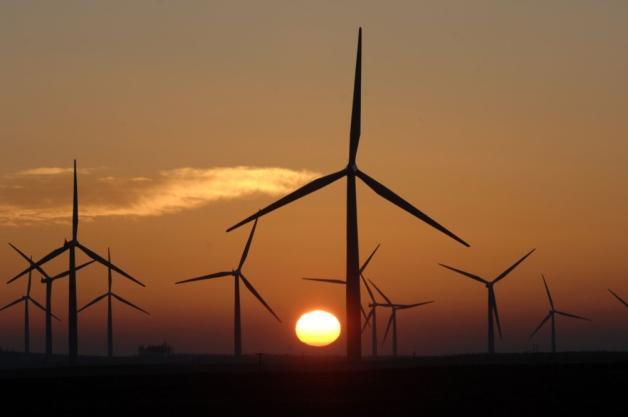
Renewable energy is taking off around the world, see how you can benefit today from SG Eco’s range of solar and wind driven lighting and ventilation solutions, visit our site at www.eco.ph
(Article first Published on: scotsman.com | November 27, 2014)
Climate campaigners yesterday welcomed the figures, saying they mark a “crucial tipping point” and signal the “beginning of the end” for fossil fuels and nuclear power.
The latest energy trends report from the Department of Energy & Climate Change (DECC) shows renewables generated 32 per cent more electricity than any other single source of power in Scotland in the first half of this year.
The sector – including solar, wind, hydro and biomass energy sources – produced a record 10.3 terawatt-hours of power. This compares to 7.8TWh from nuclear, 5.6TWh from coal and 1.4TWh from gas-fired power stations in the same period. Nuclear was previously the nation’s primary source of electricity.
Dr Richard Dixon, director of Friends of the Earth Scotland, said: “We have joined the pioneer nations who are leading the way to a 100 per cent renewables, zero-carbon world. Becoming the largest single source of electricity in Scotland is a tremendous milestone on the way to meeting all of our electricity demand from green energy sources in just six years’ time.”
WWF Scotland director Lang Banks said: “Last month, while nuclear reactors were forced to shut because of cracks, Scotland’s renewables were quietly and cleanly helping keep the lights on in homes across the country.
“Wind turbines in Scotland alone generated enough electricity to supply three million homes in the UK – equivalent to 126 per cent of the electricity needs of every home north of the Border.”
However, last night Linda Holt, spokesperson for Scotland Against Spin, said: “Wind energy is intermittent and uncontrollable, and cannot be relied upon to provide either baseload or despatchable generation. Without large-scale storage capacity – which does not exist – wind can never be the mainstay of any country’s domestic electricity consumption. The more wind is added to the energy mix, the more expensive electricity becomes because of the need for back-up, balancing and grid expansion. As those 6.3TWh of wind-generated electricity cost millions in subsidies, they are directly responsible for plunging Scots into fuel poverty.”
Scottish Labour leadership contender Neil Findlay, MSP for Lothian and a long-standing critic of government renewable energy policies, said: “I am not against renewable energy but before we rush to applaud this report we need to face up to two major criticisms.
“Firstly, what we have is a lack of co-ordinated approach, with communities inundated by speculative applications from developers. Secondly, it is the corporations and venture capital firms which often benefit from these enterprises. For them it is just another method of financial speculation.”
Niall Stuart, chief executive of industry body Scottish Renewables, said: “Every unit of power generated from renewables means less carbon emitted from the burning of fossil fuels, decreases our reliance on imported energy and supports jobs and investment in communities.”
Energy minister Fergus Ewing said: “It is vital that appropriate support for renewables in Scotland is maintained following the introduction of electricity market reform in the UK.”
The figures emerged days after a Scottish wave energy firm announced it was going into administration. Pelamis Wave Power, which invented the “sea snake” device, took the decision after failing to raise funds needed to develop the technology.

(Article first Published on: eco-business.com | November 4, 2014)
Demand for renewable energy in Asia is set to grow, and in this fast-growing landscape, utilizing the best RE technology can help save the day! Get it touch with us, visit www.eco.ph
From ultra-fast-charging batteries in Singapore to solar farms in Thailand, demand for and use of renewable energy is set to rise in fast-growing Asia.
Industry leaders speaking at the Asia Clean Energy Summit note that with such growth, business opportunities are emerging across all aspects of the renewable sector from procurement and construction services to sensors for data analytics.
Bernard Blez, senior vice president of R&D at French utility firm GDF Suez, noted that for the next ten years, growth in Asia will account for 65 percent of growth in energy consumption worldwide. The push by many Asian governments to improve air quality by switching from coal to gas and renewables is another key driver, he said.
Utility firms will have to respond to the rise of renewables in the region by working out how to rapidly develop centralised power plants, as well as come up with new business models for decentralised, distributed power generation, added Blez.
Fellow panellist Dr. Bartosz Wojszczyk, chief innovation officer at the Philippines’ largest electricity distributor Meralco, said the growth of renewables would occur “whether we want it or not; the question is how do we make this attractive in a controlled way.”
The Philippines, Wojszczyk explained, faces plenty of power-related challenges such as dispersed islands, typhoons and monsoons. Furthermore, some 30 percent of its population still lacks access to electricity. In 2015, there is likely to be a power generation deficit. “Solar and wind will probably be a big opportunity for us,” he said.
Bullish on wider energy sector
Panellists also identified other business opportunities in the wider energy sector.
Manish Kasliwal, head of the smart energy business incubation centre at technology services provider NEC APAC, noted that in the commercial and industrial sector, users were still struggling to map their energy usage patterns and work out how to control energy consumption.
Start-ups could tap and analyse this data, learn from it, and implement those lessons as a service to bigger enterprise, he suggested.
Micro-grids for islands and remote areas were also a potential area. For instance, many islands in the Philippines rely on pricey diesel generation at US$0.40 to $0.50 per kilowatt-hour and conventional centralised power generation would require expensive transmission lines to remote parts of Australia. Renewable energy would be cost-competitive in both places, said panellists.
New technologies for energy storage were another. Where renewable energy is variable or intermittent, such as solar or wind, storage is needed to smooth out minute-to-minute fluctuations or to shore up power for later use.
To test-bed the development and integration of such technologies, Singapore’s Nanyang Technological University is setting up a demonstration micro-grid at the offshore island of Semakau to integrate solar, wind, and tidal generation with more experimental energy storage and power-to-gas technologies.
Asia leads in solar energy
Asia is also leading in the development of solar photovoltaics, said Dolf Gielen, director at the International Renewable energy Association.
In 2013, China added 13 GW of solar capacity while India added 1 GW – enough to power some 250,000 four-room flats.
And Singapore and other countries in the region are seeing the rise of new business models.
Online solar marketplace SolarPVExchange, launched here in June, consolidates information from more than 20 solar installers to help potential buyers in Singapore and Malaysia to estimate the effectiveness and cost of installing solar panels.
Managing director of integrator Phoenix Solar, Christophe Inglin, said solar leasing – where users do not own the panels but leases them from a company that sells them electricity at favourable rates - is just a stepping-stone for many more business models to come
Others might include crowd-funding, which would function much like a bond that pays interest to retail investors; and a car-leasing model in which the manufacturers themselves lease solar panels and systems, he said.
But the key is to eliminate feed-in tariffs and let renewables be cost-competitive on their own. In Singapore there are no subsidies or feed-in tariffs where government agencies pay producers a favourable rate for solar energy, while in the Philippines solar is competitive against expensive diesel generation. “Assuming we don’t need subsidies, market innovation can take place,” Inglin added.
And the most important thing that governments can do to encourage the growth of renewables is “clarity, clarity, clarity” of incentives and policies, said Maxine Ghavi, head of the solar initiative at power and automation firm ABB.
Too often, fossil fuels are subsidised and electricity prices regulated so there is no push for users to transition to renewables, she said.
PH Green Council Cites Rise of ‘Green’ Buildings Amid Complex Environmental Problems
Written by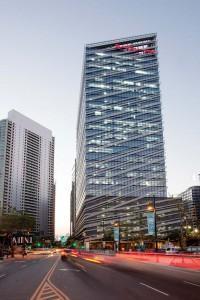
CERTIFIED ‘GREEN’ – Net Lima of The Net Group, a boutique office building located at Bonifacio Global City, is a 4-Star Building for Ecologically Responsive Design Excellence (BERDE) Project under the BERDE for New Construction version 1.0.0. It is the first certified green building under the BERDE Green Building Rating System, certified by TÜV Rheinland Philippines, Inc., a duly-accredited certification body of the Philippine Green Building Council (PHILGBC). (Photo courtesy of The Net Group)
( Article first Published on: Manila Bulletin.com | November 25, 2014)
For the past 30 years, Filipinos have been renewing their interest in constructing green buildings as they face more complex environmental problems. Taking advantage of the world’s most abundant and free energy sources are a priority factor in pursuing this cause. We can collaborate... visit our site www.eco.ph today!
“Green buildings are new kinds of buildings that are environment-friendly. These are [structures] that consume less electricity and water, and produce less waste,” Philippine Green Building Council (PHILGBC) Chairman Christopher dela Cruz told the Manila Bulletin.
Nowadays, green buildings utilize solar panels and consist of high-performance glass, which reduces the amount of heat entering the buildings, lessening the need for air-conditioners, he said.
Other features he cited include eco-friendly air-conditioners, structures that can recycle used water, small-scale wind turbines, and green roofing.
“We also look into heritage conservation, as a priority factor in constructing green buildings,” Dela Cruz said.
Green buildings are now constructed using the modular method, which involves assembling large structural parts in modules or groups. Construction also generates less waste.
Planning for green buildings involve full coordination among architects, engineers, contractors, and others, who must design structures with reducing pollution in mind.
“Green builders” collaborate with not just the Department of Environment and Natural Resources, but also other government agencies, to meet compliance standards.
“The construction of green buildings have created ‘green jobs,’ as new standards, products, and services arise,” dela Cruz said.
In the country, many of these green buildings can be seen in Makati, Quezon City, Manila, Mandaluyong City, Taguig, as well as in Cebu City and Davao City.
“As the Philippines currently has the highest electricity rates in Asia, businesses in the country treat electricity bills as among their major expenses,” Dela Cruz said. “This affects the competitiveness of our companies.”
PHILGBC uses its own accreditation system called Building for Ecologically Responsive Design Excellence (BERDE) to enact voluntary standards, and certify buildings in the country.
The Department of Public Works and Highways (DPWH) is currently drafting the Green Building Code, which will follow the National Building Code and its implementing rules and regulations.
The proposed code will tackle energy efficiency, water and wastewater management, solid waste management, materials and site sustainability, and indoor environmental quality.
If properly enforced, the said code will generate up to R35.2 billion in savings by 2030.
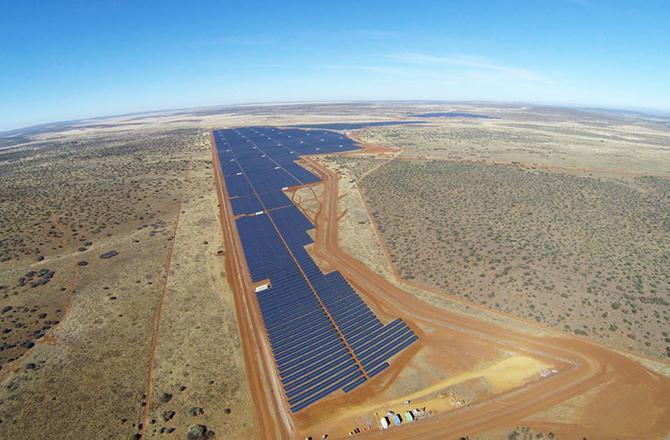
Size doesn’t matter……but why not cut out the middle man and tap directly into the most abundantly available energy source for free utilizing SG Eco’s ground breaking ventilation and lighting technologies…..visit us at www.eco.ph today!
Compared with other places around the globe, South Africa ranks among the sunniest. It gets some the highest average number of hours of sunshine per day: 8.5 hours compared with 3.8 in London, 6.4 in Rome and 6.9 in New York. So it makes sense that someone would want to build a giant solar farm there.
Crazy Solar Power Plants
Renewable energy company SolarReserve, headquartered in Santa Monica, Calif., is one such place. This month they announced they had the Jasper solar farm, located near Kimberley in South Africa, running at full capacity. The 96 MW installation is Africa’s largest solar power project.
About 325,000 photovoltaic modules will deliver 180,000 megawatt-hours of renewable electricity annually to region. That’s enough to power 80,000 homes.
Like other countries around the world, South Africa is trying to reduce carbon emissions as well as increase renewable energy sources. They’ve set a goal of having 18 gigawatts of clean energy online by 2030. The Jasper project is one such installation getting the country closer to its goal.
Solar-Powered Bulbs Brighten Off-Grid Homes
The Jasper project is one of a few big solar power plants coming online in Africa. In 2015, the 155-megawatt Nzema project in Ghana will provide that country with electricity. And Morocco aims to build several solar energy plants that will generate 2,000 megawatts of electricity by the year 2020.
Let it shine.
via Treehugger
Credit: Solar Reserve
(Source: news.discovery.com)
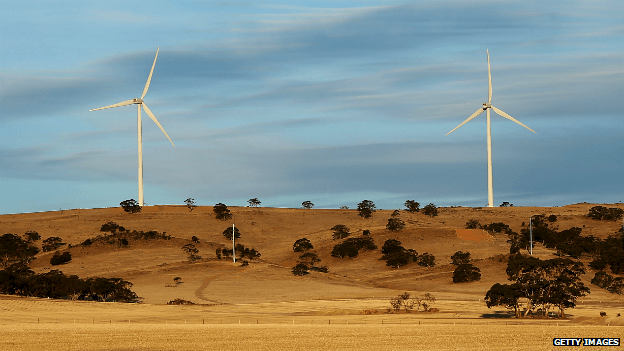
The key point isn’t the politics, policies or subsidies……it’s about incentive and if your objective is to save money by tapping into the world’s most abundant and free energy source by accessing technologies available right now then, check out our site at www.eco.ph and get in touch. We’d love to help you save money starting right now!
The Climate Council says foreign investors are going to other countries because Australia's government has no clear renewable energy policy.
Australia has gone from "leader to laggard" in energy projects, it added.
Another new report says Australia will need to raise its carbon emission reduction target to 40% by 2025.
The damning report on the state of renewable energy, entitled Lagging Behind: Australia and the Global Response to Climate Change, said the country was losing out on valuable business.
Investment that could be coming to Australia was going overseas "to countries that are moving to a renewables energy future", said Tim Flannery, one of the report's authors.
He said most countries around the world had accelerated action on climate change in the last five years because the consequences had become more and more clear.
The report found China had retired 77 gigawatts of coal power stations between 2006 and 2010 and aimed to retire a further 20GW by next year.
It also said the US was "rapidly exploiting the global shift to renewable energy" by introducing a range of incentives and initiatives to investors.
The future of Australia's renewable energy industry remains highly uncertain, the report concluded, because of a lack of clear federal government renewable energy policy.
"Consequently investment in renewable energy in 2014 has dropped by 70% compared with the previous year," it said.
'A high risk approach'
The second new report, by the Climate Institute, calls on Australia's government to announce an "independent, transparent" process for setting the post 2020 carbon emission reduction targets.
Erwin Jackson, deputy chief executive of the climate body, said too much of the political debate had "ignored growing scientific, investment and international realities".
"This short-term focus is simply a high risk approach to the significant challenges of decarbonising our economy and helping avoid dangerous impacts for Australia," he said.
Prime Minister Tony Abbott is under pressure to cut the country's emissions much further than the government has planned after the European Union moved to set a new target of 40% by 2030.
The EU said the agreement, which includes a 27% target for renewable energy by 2030, should set a new global standard.
Mr Abbott's government has said it will discuss a post-2020 target early next year and it is likely to come under more pressure this weekend at the G20 summit, which is being held in Brisbane.
Source: bbc.com
Lack of Natural Light Causing Officers 'Emotional Suffering'
Written by
An absence of natural light in some police custody suites causes personnel and detainees "emotional suffering" as well as headaches and eye strain, it has been claimed.
The fact that many custody suites are devoid of windows has been linked to burnout and psychological anxiety among staff, and this is exacerbated by harsh strip lighting, said Andy Ward from the UK’s Police Federation.
Mr. Ward, the Federation's joint lead on custody, cited research by occupational health expert Dr. Jonathan Houdmont which showed a link between a lack of access to natural light and exhaustion.
"I did six years solid in custody suites where there was absolutely no natural light," Mr. Ward said following a conference in London at which he raised the issue. "You don't necessarily think about it at the time, but when there are dark mornings and dark nights, sometimes you don't know whether it is day or night."
Attempts to "design in" natural light in custody environments have been stymied by the imperative to maintain security and privacy.
Installing windows could mean detainees being able to see co-defendants being brought into custody - which could wreck cases - and possibly increase the chance of people escaping from their cells.
Some custody suites are located in basements underneath police stations in order to keep detainees isolated.
Dr. Houdmont told PoliceOracle.com his research had found "a positive correlation between reports of a problematic lack of natural light and burnout or emotional exhaustion."
He added: "The less natural light people have at work, the more knackered they are, to put it bluntly."
There was evidence this also impacted on custody staff members' commitment and intention to remain in post, he said.
Depression and anxiety have also been linked to a lack of natural light - as have headaches and strained eyes.
Dr. Houdmont suggested using translucent glass or Perspex, rather than transparent glass so that detainees could not see co-defendants being brought in.
In some newbuild custody suites glass roofs have been installed to try and address the problem.
Marcus de Guingand, Managing Director of occupational health company Third Pillar of Health, said: "In offices and homes most lights are what we would term yellow lights, whereas light from the sun, which gives us melatonin [the 'circadian rhythm hormone'] is more on the blue or green part of the spectrum."
This study suggests that natural light is not only desirable in homes and workplaces but even in police custody suites. Lack of access to natural light can be linked to exhaustion and health issues amongst working personnel and detainees.
SG Eco is a leading provider of sky lights which use natural light to provide interior lighting. For more details about our products, contact us at +63 (45) 499 1037 or visit our site at www.eco.ph
Source: http://bit.ly/1E4aeCH

Scientific studies show that indoor air quality plays an essential role in raising and maintaining the health, safety and productivity of occupants.
According to the World Green Building Council (WGBC), better indoor quality can improve workers’ productivity up to 11%. The quality of indoor air can be determined as low concentrations of carbon dioxide (CO2) or other pollutants through therecycling of air in the area.
Proper ventilation is not only important to keep occupants healthy and comfortable but it also helps to improve the quality and condition of the building.
As an occupant, it can be difficult to determine if you have the proper amount of ventilation inside your house or office building. If you feel the heat inside your living or work space, this is a sign that you need to upgrade your ventilation system but this is just one indicator.
There are still others that you might have ignored which can also indicate that you may have a poor ventilation system.
High Humidity Level
If your house is not well-ventilated, moisture in the form of condensation may occur especially on flat surfaces or behind furniture or fixtures. You may also notice moisture build-up on your windows and glass-made doors due to trapped and/or uncirculated heat inside the building.
One of the major issues that can be caused by high humidity inside a house or office building is the discomfort it can bring to occupants.
Roof Damage
Poor ventilation can also lead to rotting roofs and wooden fitments. Roof rot or “dry rot” is caused by wood decaying fungi that live in humid or damp areas where they can hide and reproduce at a temperature most suitable for them.
If not treated immediately, roof rots can cause considerable damage.
Indoor Odours
Sometimes air fresheners and scented candles only mask the smell of unpleasant indoor air and the better solution for you is to improve your building’s ventilation system.
Proper ventilation can enhance the air quality of a building as better air circulation which is an important factor in eliminating odours, pollutants and other contaminants.
Comfort and Health
As occupants go in and out of the building throughout the day, the quality of air also changes because they continually bring in pollutants they pick up from the outside environment.
Without proper ventilation, these airborne pollutants will remain inside the building and can trigger common health issues like asthma, allergies, coughs and other respiratory problems.
Likewise, carbon dioxide (CO2) as a byproduct of human metabolism can build up in poorly ventilated building spaces leading to lethargy and tiredness among the occupants.
So poor ventilation does not only affect the physical condition of occupants but can also have a psychological impact manifested in effects such as stress and discomfort.
High Energy Bills
The temperature inside your roof/attic space can exceed 70° C or 170° F during summer. In order to regulate this, you will be required to increase your costs through energy consumption through longer hours of running the air-conditioning at higher outputs and/or improved (but costly) to maintain cooler air inside the building.
With the right choice of renewable energy powered ventilator, you can get fresher air at no extra energy expenditure.
Our Surefire Solutions to Poor Ventilation

SG Eco Industries is one of the leading providers of environmentally friendly ventilators for industrial, commercial and residential applications through our patented Green-vent technologies among others.
These allow us to design and provide ventilation systems that exceed the needs of our clients at a cost effective price and with low running and maintenance costs. We also have our own in-house team of experts who can help you install the system to your complete satisfaction.
Contact us at (+6345) 499-1037 or fill in our contact form and we will be happy to answer your enquiries!
New Report Links Office Design with Staff Health and Productivity
Written by
(Article first published on: worldgbc.org |September 24, 2014)
Another recent study shows how a well-designed office can improve employees’ productivity inside the building… World GBC finds that a range of factors – from air quality and lighting, to views of nature and interior layout – can affect the health, satisfaction and job performance of office workers. For natural lighting and ventilation system, check out our site at http://www.eco.ph/
A new report from the World Green Building Council (World GBC) finds “overwhelming evidence” that office design significantly impacts the health, wellbeing and productivity of staff.
Health, Wellbeing and Productivity in Offices: The Next Chapter for Green Building finds that a range of factors – from air quality and lighting, to views of nature and interior layout – can affect the health, satisfaction and job performance of office workers.
The report – sponsored by JLL, Lend Lease and Skanska – also presents a simple toolkit that businesses can use to measure the health, wellbeing and productivity of their buildings and inform financial decision-making.
Understanding the link between workers and their workplace helps to drive the business case for higher quality, healthy and greener buildings, valued by investors, developers and tenants alike.
With salaries and benefits typically responsible for 90 percent of an organization’s expenditure, any higher construction or occupation costs are far outweighed by even small improvements in staff performance.
Jane Henley, CEO of the World Green Building Council, said: “The evidence linking good office design and improved health, wellbeing and productivity of staff is now overwhelming. There is unquestionably a clear business case for investing in, developing and occupying healthier, greener buildings.
“Most businesses are already sitting on a treasure trove of information that can have an immediate impact on their two biggest expenses – people and buildings. Understanding the relationship between the two can help businesses achieve significant competitive advantage.”
Claudia Hamm, Head of Strategic Workplace (EMEA) at JLL, said: “Major corporate clients are now recognizing the business benefits and productivity gains of buildings which bring out the best in their employees and are increasingly making their strategic real estate decisions with these in mind. This report reinforces the view that a building’s impact on its occupants must be included within financial considerations.”
Geoff Dutaillis, Group Head of Sustainability at Lend Lease, said: “Whatever business you are in, you are in the business of people. How a building ‘works for people’ should be the priority question. This report provides further evidence that workplaces with clean air, natural daylight and engaging and adaptable layouts all contribute to making healthier, happier and more motivated individuals who create stronger, more resilient and profitable companies.”
Staffan Haglind, Green Business Officer at Skanska, said: “The equation for our clients is very simple: a small percentage improvement in the health and productivity of your staff far outweighs any additional costs associated with commissioning or occupying a greener, healthier office. Giving employees the best possible conditions to perform and stay healthy is not only wise from a financial perspective, it’s just the right thing to do.”
Health, Wellbeing and Productivity in Offices builds upon the 2013 World GBC report The Business Case for Green Building which featured a chapter on the health and productivity benefits of green buildings.
The report will be launched in London on 24 September as part of World Green Building Week. Global launch events hosted by Green Building Councils will follow in Athens, Greece (24 Sep), Sydney, Australia (25 Sep), Manila, Philippines (25 Sep), Sofia, Bulgaria (26 Sep) and Bogota, Colombia (1-2 Oct). For more information on events, visit our events page.
The report can be downloaded here.
Summary of evidence
Indoor air quality: A comprehensive body of research suggests that better indoor air quality (low concentrations of CO2 and pollutants and high ventilation rates) can lead to productivity improvements of 8-11%.
Thermal comfort: Research demonstrates that thermal comfort has a significant impact on workplace satisfaction and modest degrees of personal control over thermal comfort can return single digit improvements in productivity.
Lighting and views of nature: Several studies have estimated productivity gains as a result of proximity to windows, with experts now thinking that views from windows are probably the more significant factor, particularly where the view offers a connection to nature.
Noise and acoustics: Research suggests that being productive in the modern knowledge-based office is practically impossible when noise provides an unwanted distraction. This can be a major cause of dissatisfaction amongst occupants.
Interior layout: The way the interior of an office is configured (including workstation density and configuration of work space, breakout space and social space) has been found to have an impact on concentration, collaboration, confidentiality and creativity.
Active design and exercise: Health can be improved through exercise, and so active design within a building, and access to services and amenities such as gyms, bicycle storage and green space can help to encourage healthier lifestyles of building occupants.
Toolkit to measure health, wellbeing and productivity
Financial metrics: Absenteeism, staff turnover, revenue breakdown (by department or per building), medical costs and complaints, and physical complaints.
Perceptual metrics: Studies which test a range of self-reported attitudes into health, wellbeing and productivity in the workplace can contain a wealth of information for improving office performance.
Physical metrics: Direct measures of the physical office environment, such as temperature, are key to measuring the effect on the health, wellbeing and productivity of workers. Exciting developments in this area such as portable and wearable technology are likely to substantially expand our understanding.
Steering Committee
Miles Keeping (Chair), Deloitte Real Estate
Dr Fiona Adshead, Independent Advisor
Staffan Haglind, Skanska
Claudia Hamm, JLL
Robert Lam, Wong & Ouyang
Roger Limoges, US Green Building Council
Prof Vivian Loftness, Carnegie Mellon University
Mark Nicholls, Retired Bank of America Real Estate Executive
Hector Sandoval, Carrier Enterprise
Ché Wall, Flux Consultants
Duncan Young, Lend Lease
Corporate sponsors of the report:
JLL, Lend Lease and Skanska
Project partners:
Colombia Green Building Council, Hong Kong Green Building Council, US Green Building Council and UK Green Building Council
Media Contact:
Karen Jamal
Communications
World Green Building Council
karen@kjcommunications.com
+61 2 6288 3419

Roof works always involve risk and potential injuries especially if you are not using the right equipment for roof access.
According to the Occupational Safety and Health Administration (OSHA), more than 100,000 workers in the United States are injured annually due to falls on construction sites.
In order to avoid becoming a victim, installing a safe access system to rooftops is one of the best solutions.
SG Eco’s Roof Access Hatchways provide the safest and most convenient entry to your roof. These hatchways are ideal for domestic and commercial buildings.
Falling from Ladders
This is one of the leading causes of fatalities whether on occupational or non-occupational activities. It can happen due to various reasons: over-balancing, unstable footing or soft ground, defective or loose ladder components etc.
 Fall-off injuries related to ladder can be substantially reduced with the use of Access Hatchways. This product allows workers or residents to safely access their roofs with its Gapseal Foam, sealing and supporting its lid to prevent any movement especially during strong winds.
Fall-off injuries related to ladder can be substantially reduced with the use of Access Hatchways. This product allows workers or residents to safely access their roofs with its Gapseal Foam, sealing and supporting its lid to prevent any movement especially during strong winds.
Getting trapped or crushed between MEWPs
Mobile Elevating Work Platforms (MEWPs) are machinery or equipment that is in different jobs that require working at heights such as tree cutting/trimming and roof work.
The use of MEWPs can reduce the time and effort of workers but inadequate knowledge on how to operate these machines can also lead to serious injuries such as entrapment and collision of the equipment with adjacent structures.
 Access Hatchways no longer require additional machinery or equipment in order to gain access to your roof. It is manufactured from 0.75mm sheet metal for durability. Its design also offers ease of use to customers and is suitable for most roof type.
Access Hatchways no longer require additional machinery or equipment in order to gain access to your roof. It is manufactured from 0.75mm sheet metal for durability. Its design also offers ease of use to customers and is suitable for most roof type.
Electrical Injury
Most of us do not think about the possibility of electrocution when we access the roof with a ladder.
If a metal ladder comes into contact with damaged electrical cables, you can be exposed to electrical injuries because of the easier transmission of the current into your body.
 As opposed to ladders, Hatchways are placed permanently on your rooftop to avoid interfering with electrical cabling every time you do roof work.The SG Eco team can help you find a safer location for your Access Hatchways and install it to avoid close contact with cabling on your rooftop.
As opposed to ladders, Hatchways are placed permanently on your rooftop to avoid interfering with electrical cabling every time you do roof work.The SG Eco team can help you find a safer location for your Access Hatchways and install it to avoid close contact with cabling on your rooftop.
Risk of Falling Objects
Accidents due to falling objects which can lead to injury or death to workers and even by-passers or onlookers can be prevented if you have a safer access system to your roof.
 Aside from the padlockable latch from the inside which provides additional security against unwanted intrusion, Dome Lid Access Hatchways also allows natural light to enter the building thereby improving the ambient lighting within the building.
Aside from the padlockable latch from the inside which provides additional security against unwanted intrusion, Dome Lid Access Hatchways also allows natural light to enter the building thereby improving the ambient lighting within the building.
We will be Glad to Hear from You!
Our Access Hatchways come with three different lid types - Steel, Insulated and Dome. To learn more about these products and others in our range, feel free to contact us at +63 (45) 499 1037 or fill in our contact form.
More...

AIR POLLUTION. Midday traffic moves slowly through air pollution which exceeds the level of 400 on the air quality index, rating a hazardous warning, in Beijing, China, 26 March 2014. Adrian Bradshaw/EPA
(Article first published online: September 09 | rappler.com)
Reversing the effect of climate change cannot be done overnight but simple household efforts can make a huge difference. Reducing electric usage will not only let you save money but will also help you lessen Greenhouse gas emission. Find out how our products can help you: http://www.eco.ph/
(UPDATED) WMO chief: 'We know without any doubt that our climate is changing and our weather is becoming more extreme due to human activities such as the burning of fossil fuels'.
GENEVA, Switzerland (UPDATED) – Surging carbon dioxide levels boosted greenhouse gases in the atmosphere to a new high in 2013, amid worrying signs that absorption by land and sea is waning, the UN warned Tuesday, September 9.
"An alarm bell is ringing," Michel Jarraud, head of the World Meteorological Organization (WMO), told reporters in Geneva.
In its annual report on Earth-warming greenhouse gases in the atmosphere, the UN agency said concentrations of carbon dioxide (CO2), methane and nitrous oxide all broke records in 2013.
"We know without any doubt that our climate is changing and our weather is becoming more extreme due to human activities such as the burning of fossil fuels," Jarraud said.
"We must reverse this trend by cutting emissions of CO2 and other greenhouse gases across the board," he said in a statement, and warned: "we are running out of time."
Especially worrying, Jarraud said, was the sharp rise in CO2, by far the main culprit in global warming, to 396 parts per million in the atmosphere last year.
That was 142% of levels prior to the year 1750, and marked a hike of 2.9 parts per million between 2012 and 2013 – the largest annual increase in 30 years.
It was not clear why concentrations rose so sharply, but Jarraud suggested it could be due to a shift in the ability of oceans and the biosphere to absorb emissions.
'A worrying signal'
Oceans swallow about a quarter of greenhouse gas emissions, while the biosphere sucks up another quarter, so any change "could potentially have big consequences," he warned.
"Clearly now we have a signal, ... a worrying signal," said Jarraud.
University of Reading meteorology professor William Collins said the WMO's suggestion that the biosphere may be removing less CO2 as the climate warms was credible, and implied a "future amplification of climate change".
"We can't expect to benefit from this natural removal for ever," he warned.
Tuesday's report came ahead of a September 23 summit called by UN Secretary General Ban Ki-moon to try and build momentum ahead of the 2015 deadline for a historic climate deal to be signed in Paris, to take effect from 2020.
The UN is seeking to limit global warming to two degrees Celsius (3.6 degrees Fahrenheit) over pre-Industrial Revolution levels, but scientists say that on current emission trends, temperatures could be double that by century's end.
"We have the knowledge and we have the tools for action to try to keep temperature increases within two degrees Celsius to give our planet a chance and to give our children and grandchildren a future," Jarraud said, insisting that "pleading ignorance can no longer be an excuse for not acting".
Professor Dave Reay, chair in carbon management at the University of Edinburgh, reacted to the report with dismay.
"This is the litmus test when it comes to our efforts to reduce emissions and on this evidence we are failing," he said.
The findings are especially worrying since CO2 remains in the atmosphere for hundreds of years and in the oceans for even longer.
While the ocean's absorption of CO2 helps limit global warming, "the bad news is that it contributes to the acidification of the ocean," Jarraud said.
Increased acidity not only alters the ocean's ecosystem, but can also reduce its ability to absorb more CO2, he said.
Every day the world's oceans absorb some four kg (8.8 pounds) of CO2 per person, the WMO said, adding that ocean acidification levels were "unprecedented at least over the last 300 million years".
And things will only get worse, said Jarraud.
"Past, present and future CO2 emissions will have a cumulative impact on both global warming and ocean acidification," he said, adding that "the laws of physics are non-negotiable". – Rappler.com
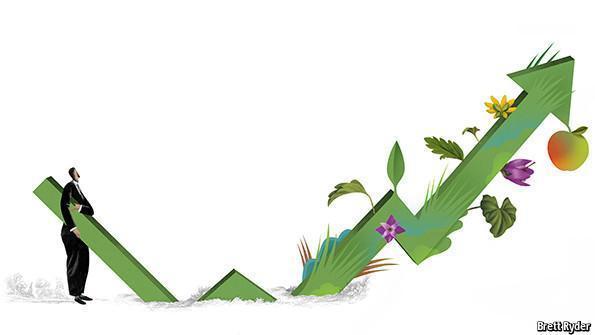
(Article first published online: August 30 I economist.com)
A few pioneering businesses are developing “sustainability policies” worthy of the name. Sustainability plans focus on saving energy, cutting waste and streamlining logistics.
Choose the right eco-friendly products that can boost your sustainability efforts without reducing your profit. Visit our site at http://www.eco.ph/
BILL MCKIBBEN, an American environmentalist, once dismissed sustainability as “a buzzless buzzword”. That seems about right. A survey of 2,000 companies by the MIT Sloan Management Review and the Boston Consulting Group found that two-thirds of businesspeople thought social and environmental matters were “significant” or “very significant” but that only 10% thought they themselves were doing enough about it.
That sense of disappointment should be no surprise. Sustainability can refer to anything from building wind farms to combating social inequality. The idea crops up everywhere from Starbucks to the deliberations of the United Nations (whose governments are in the middle of working out a set of so-called Sustainable Development Goals for 2015-30). An ill-defined, controversial notion is no basis for coherent policy.
Many corporate “sustainability plans” are therefore modest. They focus on saving energy, cutting waste and streamlining logistics. Nothing wrong with that: these things reduce operating costs while benefiting the environment. They help explain why sustainability efforts tend to increase profits, not reduce them. A study by Robert Eccles and George Serafeim of the Harvard Business School (HBS) found that, between 1992 and 2010, companies which adopted what they call high-sustainability policies were more profitable and improved their stockmarket valuation more than those which did not (though this may just have been because high-sustainability firms happened to be better managed).
However, there are drawbacks to such plans. For one thing, they are misnamed: these are efficiency policies, not sustainability ones. Companies ought to want to save energy or cut waste anyway, regardless of the impact on the environment. And it turns out that many of the schemes do not in fact do that much for the environment or social equity. The majority of greenhouse-gas emissions associated with consumer goods, for example, are produced either in the supply chain or by shoppers. So there is only limited scope for such products’ makers to lessen their environmental footprints through green measures of their own.
As a result, most corporate sustainability plans rarely amount to more than cost-saving measures and compliance with government regulations, plus a few projects with a public-relations punch (say, reforesting parts of a cleared jungle). They fall well short of putting sustainability at the heart of what firms do.
For some companies, though, that is changing. Take SABMiller, the world’s second-largest brewer. The firm has been a pioneer in the field. But until recently its sustainability efforts consisted of a laundry list of targets (there used to be ten) aimed at reducing carbon emissions or water usage in its brewing operations. This summer it unveiled new, broader targets—only five this time—which apply to suppliers, sellers and customers, as well as to SABMiller itself. It is promising to teach basic business skills to 500,000 small enterprises, mostly shops which sell its beer. It is helping farmers use water more efficiently: in Rajasthan, in northern India, it is working with wheat farmers who have been depleting their aquifer to reduce water use by a quarter, to ensure it still has water to brew beer. And it is sponsoring anti-drunkenness and road-safety campaigns aimed at its own customers.
Jane Nelson, director of the Corporate Social Responsibility Initiative at the Harvard Kennedy School, says SABMiller’s efforts are characteristic of a new wave of sustainability plans. These set targets not only for the company but for the people it works with and sells to. The targets are not only about the environment but society at large. (In a spectacular example, Unilever, an Anglo-Dutch consumer-goods giant, says it aims to “help a billion people take steps to improve their health and well-being”.) They are supervised by the board, not left to specialists. Domtar, an American fibre company, created a sustainability committee but the vice-president for sustainability does not chair it; the chair rotates among other managers so as to involve the firm as a whole. In short, she argues, for some companies sustainability has become a core part of their strategy, not just a green way to cut costs.
Little green men
But why should firms make sustainability central to what they do? Environmentalists might reply that virtue is its own reward. But companies need more concrete returns—higher profits, say, or increased sales, or higher stockmarket valuations.
The first wave of sustainability policies provided those. The new wave may not: sustainability targets could raise costs, not cut them, making environmentally friendly consumer goods more expensive than the eco-hostile variety. Efforts to combat social inequality could boost wages. Training can be costly.
Paul Polman, the boss of Unilever, argues that good sustainability policies still improve the fundamentals of businesses in the long run. They change customers’ behaviour in beneficial ways—by, say, increasing demand for green products that the firm makes. They also please investors concerned about environmental threats. The trouble is that consumer behaviour is often slow to change and that, if green products are too expensive, the firm risks losing market share. Environmental investors are still a minority among shareholders, most of whom continue to be more concerned about quarterly earnings.
The first wave of sustainability rewarded itself. The new wave will not do that. It is more akin to investing now to have a licence to operate in future, when consumers, lobbyists and regulators will be ever more demanding about the way firms behave. That does not mean the new wave will not reward its adopters. But it will boost their long-term competitive position, rather than their short-term profits. Unlike the rewards of the superficial first wave, those of deeper sustainability could take years to sink in.

Since moving into the age of the ‘green revolution’, property owners have been looking for ways to improve the safety and comfort of their homes and buildings utilizing environmentally friendly products.
You may have heard of skylights, but do you know exactly how good they can be for you? Aside from the more obvious benefits of cost effectiveness and enhanced aesthetics for commercial and residential buildings, skylights can also improve your health and boost productivity through the natural light they provide.
Why Skylights?
This daylighting device transfers natural light from outside the building and delivers it to the living or work space contained within. Sounds simple enough but the design, manufacture and installation of the units are all critical stages toward their effective operation. SG Eco has been operating in this line of business for nearly 20 years and has an impressive track record to show for it.
Skylights are also suitable for domestic applications such as bathrooms, kitchens and hallways.
 Contribution to the ‘Green Revolution’
Contribution to the ‘Green Revolution’
It takes a collaborative effort to help protect Mother Earth.
Skylights are beneficial to large corporations and commercial operators as well as individual households not just because it reduces their electricity consumption but because that in turn, reduces their Carbon Footprint or the amount of greenhouse gases produced to generate that electricity.

 Convenient and Cost Effective
Convenient and Cost Effective
Cost savings are important to everyone.
One of the great advantages of skylights are their electricity-free operation. One of SG Eco’s case studies illustrates how a manufacturing plant could save up to 39,000 kwh per year after it installed 56 evenly distributed 535mm Sky tunnels on to its building.
To see full case study, click here: http://www.eco.ph/pdf/Case-Studies/Commercial-CS.pdf
And because the skylights are not reliant on power from the grid or local supply network, they are not affected by power interruptions, should they occur.
 Promotes Safety and Comfort
Promotes Safety and Comfort
Safety and comfort are two of the most important considerations when building a house.
It’s a big challenge to design or adapt a property that is comfortable for all its occupants. Well, here is another way that SG Eco Skylights can help you achieve that? Installing Sky Tunnels does not create additional heat load within your house because the components of its tubing do not retain or transmit heat. The devices use a triple glazed system that makes it resistant to heat and humidity.

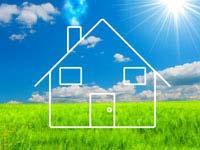 Aesthetic Appeal
Aesthetic Appeal
Unlike traditional skylights, our Sky Tunnels are UV stabilized, made of highly durable materials and have an acrylic dome that allows more light to enter the tube. Its slick and smart design improves the aesthetics of your homes’ exterior while providing an optimal lighting system for its interior.
Share the Good News!
SG Eco has been a global leader in providing tubular skylights for over 20 years and their Sky Tunnel Tubular Skylights come with a 7-year manufacturer’s warranty. For more enquiries about our products, contact us at +63 (45) 499 1037 or fill in our contact form.

( Related News)
A study conducted by researchers at the Northwest Medicine and the University of Illinois at Urbana-Champaign shows how natural light can boost workers' health in the office. SG Eco's Skylights are designed to convey light into a house or building with greater efficiency and ease through free and renewable energy from the sun. Check out our site at http://www.eco.ph/ for more eco-friendly products.
CHICAGO — Office workers with more light exposure at the office had longer sleep duration, better sleep quality, more physical activity and better quality of life compared to office workers with less light exposure in the workplace, reports a new study from Northwestern Medicine and the University of Illinois at Urbana-Champaign.
The study highlights the importance of exposure to natural light to employee health and the priority architectural designs of office environments should place on natural daylight exposure for workers, the study authors said.
Employees with windows in the workplace received 173 percent more white light exposure during work hours and slept an average of 46 minutes more per night than employees who did not have the natural light exposure in the workplace. There also was a trend for workers in offices with windows to have more physical activity than those without windows.
Workers without windows reported poorer scores than their counterparts on quality of life measures related to physical problems and vitality, as well as poorer outcomes on measures of overall sleep quality and sleep disturbances.
The study was reported in the Journal of Clinical Sleep Medicine in June.
“There is increasing evidence that exposure to light, during the day, particularly in the morning, is beneficial to your health via its effects on mood, alertness and metabolism,” said senior study author Phyllis Zee, M.D., a Northwestern Medicine neurologist and sleep specialist. “Workers are a group at risk because they are typically indoors often without access to natural or even artificial bright light for the entire day. The study results confirm that light during the natural daylight hours has powerful effects on health.”
Zee is the Benjamin and Virginia T. Boshes Professor of Neurology at Northwestern University Feinberg School of Medicine and director of the Sleep Disorders Center at Northwestern Memorial Hospital.
“Architects need to be aware of the importance of natural light not only in terms of their potential energy savings but also in terms of affecting occupants’ health,” said co-lead author Mohamed Boubekri, an associate professor of architecture at the University of Illinois at Urbana-Champaign.
A simple design solution to augment daylight penetration in office buildings would be to make sure the workstations are within 20 to 25 feet of the peripheral walls containing the windows, noted Boubekri. “Daylight from side windows almost vanishes after 20 to 25 feet from the windows,” he said.
The study group included 49 day-shift office workers; 27 in windowless workplaces and 22 in workplaces with windows. Health-related quality of life and sleep quality were measured with a self-reported form and sleep quality was evaluated with the Pittsburgh Sleep Quality Index (PSQI). Light exposure, activity and sleep were measured by actigraphy in a representative subset of 21 participants; 10 in windowless workplaces and 11 in workplaces with windows.
Actigraphy is a single device worn on the wrist that gives measures of light exposure as well as activity and sleep. This is an ambulatory physiological data logger that records motion and light illuminance. The motion was used to determine activity levels during waking time and to calculate sleep time. The light luminance was used for measures of light exposure during the workday period.
“Light is the most important synchronizing agent for the brain and body,” said Ivy Cheung, co-lead author and Ph.D. candidate in neuroscience in Zee’s lab at Northwestern. “Proper synchronization of your internal biological rhythms with the earth’s daily rotation has been shown to be essential for health.”
Also, people who get more light during the day may sleep better at night, which can also help improve health, Zee noted.
Other authors include Kathryn Reid from Northwestern and Chia Hui-Wang from the University of Illinois.
###
The research was supported by grants 5T32 HL790915 from the National Heart, Lung and Blood Institute and P01 AG11412 from National Institute on Aging, of the National Institutes of Health.
(Image source: google.com)
Source: http://www.stonehearthnewsletters.com/natural-light-offices-boosts-health/sleep/







